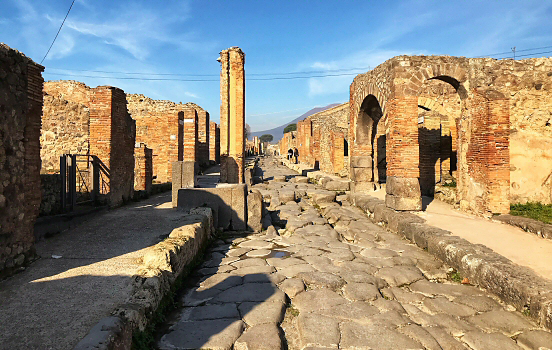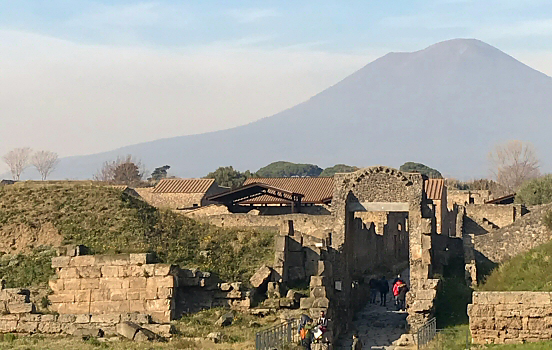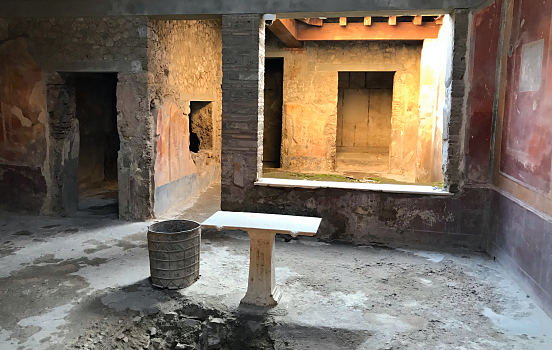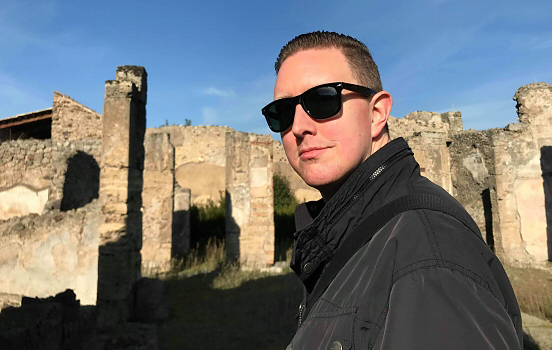It’s a sunny day, but the past is anything but. Pompeii isn’t just ruins. It’s a moment, frozen in terror and volcanic fury. In 79 AD, Mount Vesuvius blew its top and gave the Roman Empire a masterclass in humility. The city didn’t just die, it was instantly preserved, sealed in ash and arrogance.
To visit Pompeii is a chance to travel back in time. I wander along the quiet streets in the best preserved Roman ruins on the planet, trying to imagine the daily life in this city before the apocalyptic eruption. At most places in the ruins, Mount Vesuvius is clearly seen at the horizon, looming over the city like a real life version of Mount Doom in Mordor.
 Tales of ash in the Pompeii ruins.
Tales of ash in the Pompeii ruins.
Mark Twain made a reflection on his visit way back in 1867:
“It was a quaint and curious pastime, wandering through this old silent city of the dead–lounging through utterly deserted streets where thousands and thousands of human beings once bought and sold, and walked and rode, and made the place resound with the noise and confusion of traffic and pleasure.”
— Mark Twain (1867)
 In the shadow of Mount Vesuvius.
In the shadow of Mount Vesuvius.
The eruption of the volcano almost 2000 years ago covered the city in six meters of ash and debris. Estimates are that 15 000 people were living in Pompeii around that time. Many of the victims were wrapped in calcified layers of ash, preserving the form of their bodies even after the biological material decomposed. Today plaster casts of the bodies can be seen in several places.
It’s voyeuristic, sure, but also a punch to the gut. These aren’t heroic statues of Roman gods. They’re depicting real people who woke up expecting a normal day and ended up as a museum exhibit called “Don’t Mess With Nature.”
 A room in the ruins.
A room in the ruins.
Some of the old houses still have well-preserved paintings, such as Case del Principe di Napoli with its striking red walls. It’s strange and intimate to visits someones home without invitation. I feel like I’m eavesdropping across millennia.
 Exploring the ruins.
Exploring the ruins.
There are a lot of Roman ruins in Europe, but it’s a weird feeling to walk around in a city that was so suddenly destroyed. Pompeii is a confrontation with death, with history, with the uncomfortable truth that we’re not nearly as in control as we like to believe.

Comments
No comments yet.
Leave a reply